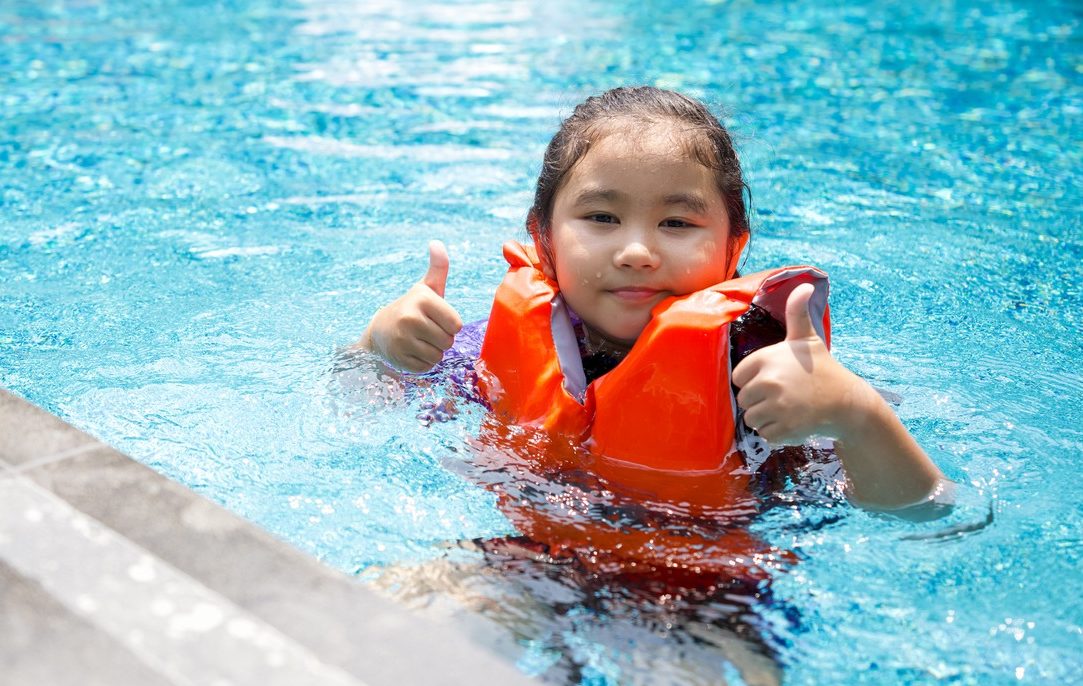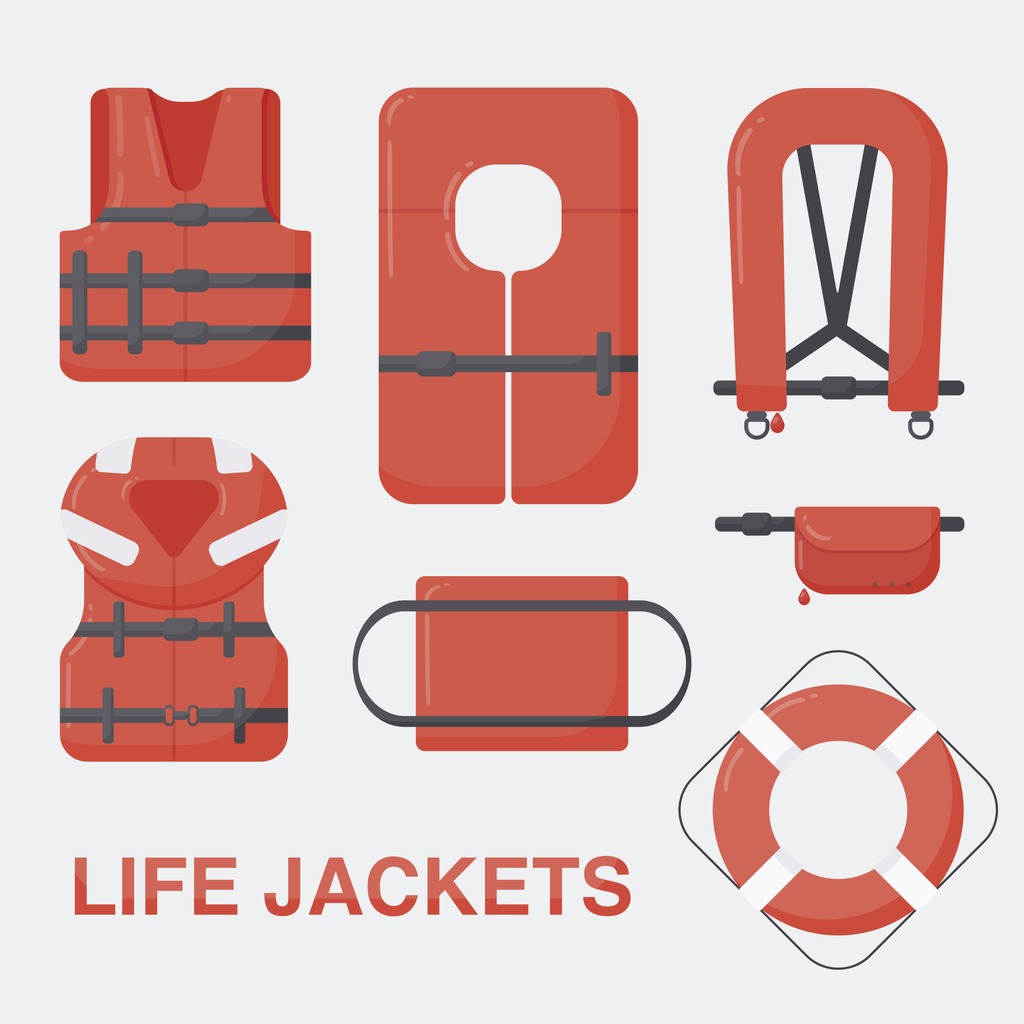Life jackets are designed to keep a person afloat in water to avoid drowning. Cruise ships, passenger ships, cargo ships, and any other ship used for transporting people or moving objects are advised and required to have life jackets for every person onboard.
Life jackets help save people during ship tragedies or boating accidents. The mandatory use of life jackets on board ships was made possible with the First International Convention for the Safety of Life at Sea (SOLAS) in 1913: the year after the Titanic sank.
Short History of life jackets
Even before the invention of life jackets, the ancient civilization had already devised different ways to float in water. A carving in the British Museum shows Assyrian soldiers swimming while holding onto inflated animal skins dating back to 870 BC.
In his book, “Designed for Life: Life Jackets Through the Ages,” Christopher Brooks wrote that the first life jackets appeared in the 1850s. Its first appearance happened when iron boats began to replace traditional wooden vessels. Since iron ships were in the process of trial and error, there was a need to develop life jackets for those on board.
In 1854, the first-ever lifejacket to be issued to lifeboat crew members was the cork lifejacket. Captain Ward, the Royal National Lifeboat Institution (RNLI) Inspector in England, ensured their volunteers were safe at sea.
For the design of life jackets, many materials have been meticulously tested for buoyancy, weight, durability, and water resistance. The material was immediately scrapped if a component did not meet RNLI standards to survive the life-saving task at hand.
Following losses in the Battle of Britain during World War II, life jacket designs were further refined and developed on both sides of the conflict. Dr. Edgar Pask, a physician working at RAF Aeronautical Medical Laboratory in Farnborough, England, has seen the use of an inflatable/intrinsically buoyant hybrid vest, Mae West, to be used by British pilots.
The final life jacket designed by Captain Ward used regular circular strips of cork strung together and sewn into a canvas vest. The lifejackets were created in two different sizes: to fit the builds of the lifeboat crew, and large enough for a casualty’s head and shoulder to be passed over.
The lifejackets were created in two different sizes to fit the builds of the lifeboat crew, but they were also large enough to be passed over a casualty’s head and shoulders.
Lifejackets have changed over the years, but the essential duty that they carry out has stayed the same. Regardless of all the innovations coming through for lifejackets, an RNLI lifejacket must follow the same standards: (1) they must be buoyant enough to support a crew member and another person, (2) they must not hinder movement, and not intervene with other protective clothing, (3) they must not be complicated to wear, and (4) they must be durable, strong, and in good condition.
Types of Lifejackets
Type I: Type I Lifejacket is also called an Offshore Lifejacket. It is best for cruising, racing, fishing offshore, or boating alone. It is suitable for open, rough, or remote water where rescue may be slow in coming. It turns unconscious wearers face up in the water. It offers the best protection and retains body heat, consisting of additional foam and fabric. But it can be bulky and can be a little bit uncomfortable. Its minimum buoyancy, or the amount of floatation to help keep a person afloat, is 22 pounds for adults and 11 pounds for a child.
Type II: Near-shore buoyant Vests are suitable for inland day cruising, fishing, and sailing activities. It is much more comfortable compared to type I lifejacket but with lesser buoyancy: 15.5 pounds for adults. It is ideal for calm, inland water or where there is a good chance of fast rescue. It is not recommended for rough water as it requires users to tread water to keep their heads above it.
Type III: Type III lifejackets are suitable for supervised activities such as sailing regattas, dinghy races, water skiing, fishing, canoeing, kayaking, and personal watercraft operation. Like type II, it is not designed for rough water use and is only suitable for protected, inland water near shore use where immediate rescue is available. It is also comfortable to use but only offers 15.5 pounds of minimum buoyancy for adults. It is not designed for unconscious people in the water as it does not turn the face afloat.
Type IV: Throwable device. This type is not designed to be worn; not for children, non-swimmers, and unconscious people. They are throwable devices such as rings, horseshoes, and cushions that should be available at arm’s length. This is only good for calm, inland water with heavy traffic, where help is always nearby. Its minimum buoyancy is 16.5 pounds for ring buoy and 18 pounds for a boat cushion.
Type V: Type V are Special use life jackets. They are restricted to a particular use and are designed for sailboard harnesses, deck suits, paddling vests, commercial white water vests, or float coats. The minimum buoyancy for a type V lifejacket is 15.5 to 22 pounds for an adult. It must be worn underway and is often combined into floatation coats.
Types of Lifejackets for Infants
Infants are very vulnerable and fragile. So, it is crucial to be proactive and cautious of their safety, especially when they are in activities where parents’ attention might be diverted to something.
The American Academy of Pediatrics (AAP) states that babies should always wear a life jacket near water, from lakes to rivers to the ocean, even if parents are not planning to let the baby into the water. Open water (even an inch or two) poses a drowning hazard, especially for babies and toddlers who cannot swim.
Life jackets are a part of a parent’s overall water safety strategy. Although Type II life jackets or floatation devices are generally recommended for infants, different types of life jackets are specially made for them and are commercially available everywhere. One must know the exact lifejacket appropriate for an infant’s needs. When considering lifejackets for infants, the following should be taken into consideration:
US Coast Guard Approved
Before choosing any lifejacket for an infant, make sure that the appropriate authorities approve them as they know precisely the type suitable for the infant’s needs.
Visibility
The right infant life jacket allows the parents to spot the infant immediately, especially in a crowd.
Buoyant
Buoyancy or the good floatation characteristic of a life jacket must be the first thing parents should look for in a life jacket for an infant. Parents can secure if the type of infant jacket they choose is buoyant enough for their child by taking a float test at home.
Temperature Control
An infant’s lifejacket must also be able to control the proper temperature suitable for babies for them to feel comfortable and safe.
Lightweight and Fit
Lifejackets should never bring discomfort to infants. As much as possible, they should be lightweight and must match the exact fitting of an infant.
Final Thoughts
Aside from a good plan for a vacation or beach or any water exploration, safety should always come first before anything. This is especially true if there are children involved in a particular activity. The priority is to make everyone safe and have good memories.


